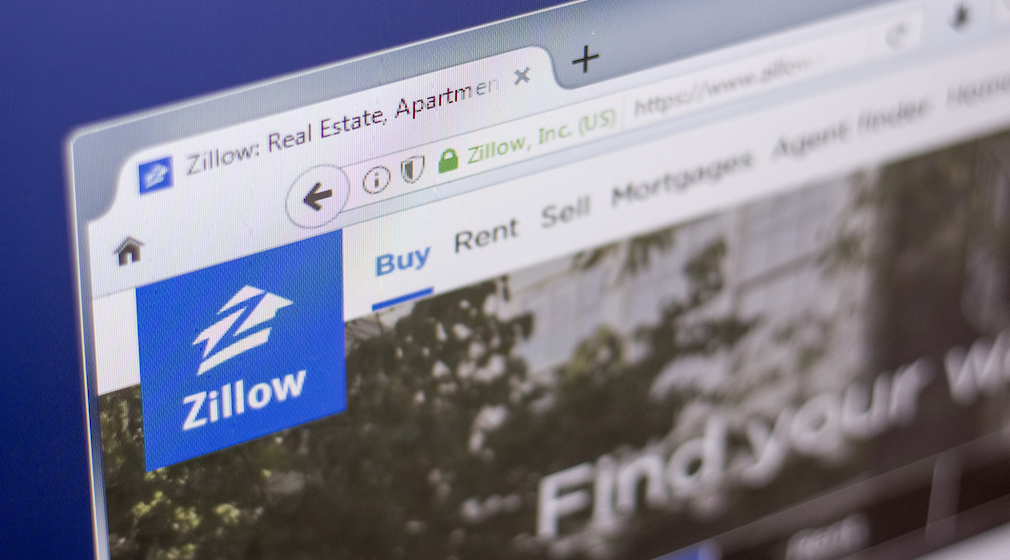Zillow again dragged the entire housing sector into the future with their 2018 earnings announcement last week by becoming the Netflix of homes.
Consumers win here, end of story. We all spend our days talking about how home buying and selling is too complicated, so you have to admit it’s pretty cool if a customer can fill out a quick form to sell their home in a few days, find a new one, and get financed all in one place.
But Zillow has betrayed lenders and real estate agents by buying, selling and financing homes, so we can’t think it’s cool, right?
Wrong.
Let’s get into it, starting with a few 2018 earnings highlights:
- Zillow’s 2018 revenue was $1.33 billion, of which $898.33 million was from real estate agent leads and services, $80.05 million was from lender leads and services, and $52.37 million was from directly buying and selling homes.
- The company’s three to five year revenue target is $22 billion, of which $2 billion will be from agent, lender, rental, new construction and other leads and services, and $20 billion will be from buying and selling homes.
- To get this revenue target, it’ll buy 5,000 homes per month. Today, a seller asks Zillow to make them a purchase offer every five minutes.
- Zillow also plans for its newly acquired mortgage division to make 3,000 mortgage loans per month.
So Zillow’s revenue today is still mostly from agent and lender leads, which they plan to double, and they also plan to go big on buying and selling homes, and finance a good chunk of those sales.
Let’s take financing first.
If we assume loan size at 80% of the National Association of Realtors’ median existing home price of $247,500, that’s 3,000 loans of $198,000 per month, which equates to $7.13 billion in mortgage volume.
To put that in perspective, here are the lenders that did $7 billion in retail volume for 2018, according to Inside Mortgage Finance: Citizens, $7.09 billion; Homebridge, $7.10 billion; Suntrust, $7.31 billion; American Pacific Mortgage, $7.42 billion; PNC Mortgage, $7.43 billion; and Freedom Mortgage, $7.73 billion.
Each of these firms has about 0.5% share of the $1.64 trillion in mortgage funding per year. In a market this big, there’s room for other players.
Now let’s look at lender leads.
Zillow is not cutting this off. In fact, they’re looking to double lead revenue.
Zillow sites had 7 billion visits in 2018. Think about that. Can you afford to ignore a lead option with that kind of consumer reach?
The last time I warned that you ignore Zillow at your own risk was in 2012, right after they bought Mortech, and now this lesson is more important than ever.
Yes, you can “be the media” by being savvy on social, and you’ll generate a few leads. But if you’re a lender who’s serious about reaching high-intent customers at scale, it’s not just a guerrilla social game. You must learn the aggregator game.
And the good news is that marketing and point of sale software you’ve been investing in enables you to run this game confidently, and properly measure return on investment (more on this next time).
Finally, let’s look at real estate agent leads.
Again, the company is looking to double lead revenue. Real estate agents committed to Zillow leads will get two lifts:
1. Sellers asking Zillow to make them purchase offers every five minutes translates into $100 million in demand value per day, yet they’ve only bought 686 homes from sellers since they got started in April 2018.
This means most sellers currently decline Zillow’s offer, and when this happens, Zillow refers them to their real estate agent partners. So Zillow Offers also serves as a massive seller intent machine, then routes those potential listings to its agents who list and close from there.
2. Buried in Zillow’s news last week were notes on how they’re experimenting with a model where agents won’t have to pay for leads up front. Instead they’d pay when the deal closes. I can’t think of an agent who wouldn’t be intrigued by that.
Thirteen years ago, Zillow dragged the entire housing sector into the future by giving consumers one place to view home listings. That consumer-in-control premise eventually led to 7 billion Zillow visits in 2018.
With that much traffic, they can successfully serve many masters: lenders, realtors and consumers.
So as we get closer to the busy buying season of 2019, I come back to my 2012 warning: ignore Zillow at your own risk.






